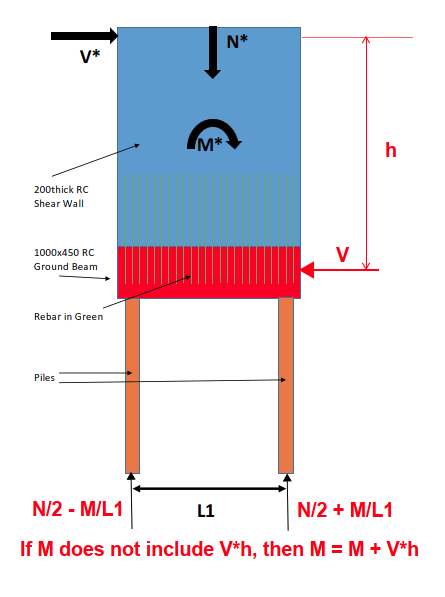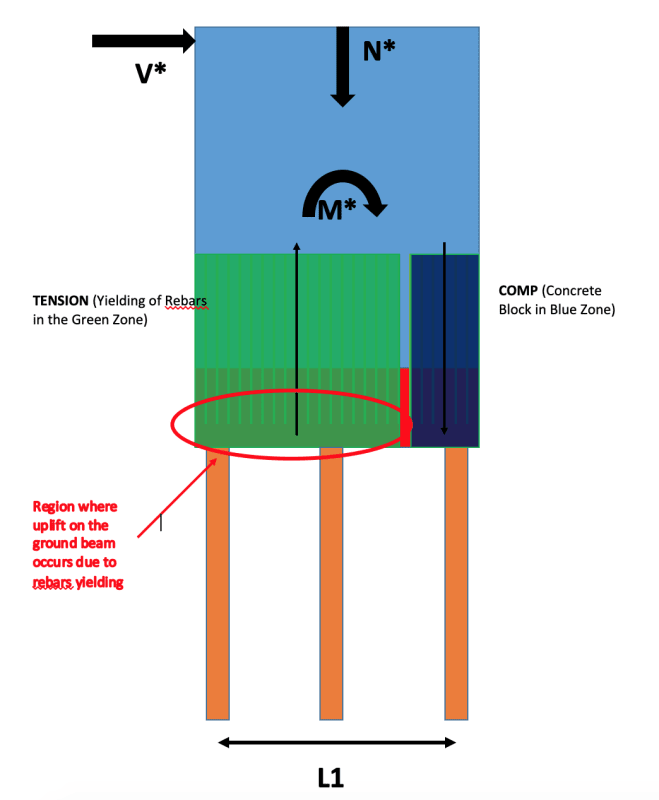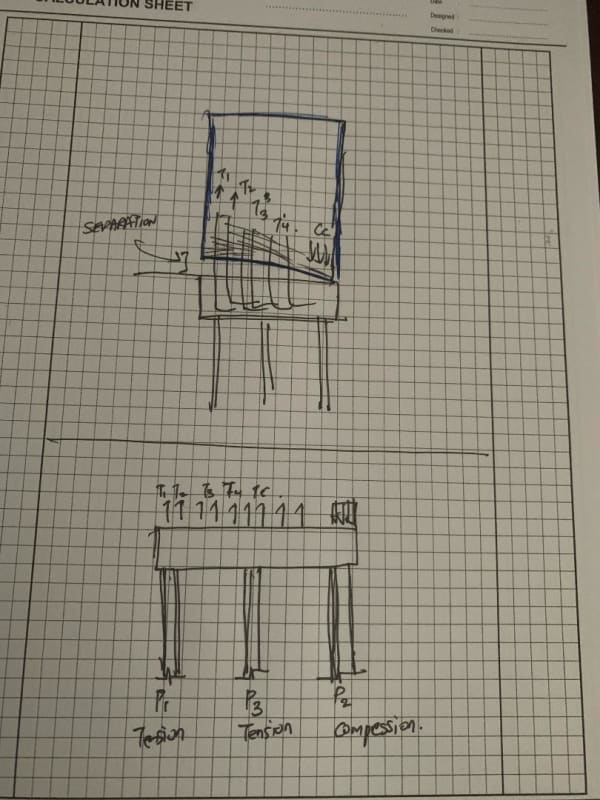Hi
I have a question regarding a RC shear wall supported on Steel Piles. Please see link for shear wall and pile configuration.
When a lateral load is applied to the shear wall, there is overturning moments on the wall in addition to shear and axial loads. If we assume that all of the rebars yield, would this mean that my ground beam would need to be designed for uplift due to yielding of rebars with compression being confined to the far end? This is basically the case where we already account for axial load in calculating moment capacity and there is a localised very high compression load on one end of the beam/wall; Or do we need to also apply downward axial force(N*) which would then counteract the tension force due to rebar yielding.
In addition, what forces would the pile experience? To obtain pile loads due to Moment, do we do M*/L1 or do we do M*/ lever arm of couple. The lever arm of the couple would almost be equal to L1/2 with compression block at one end and tension over most of the ground beam. The latter would give me a much higher compression load in the pile.
Also, how do we deal with this when there is a 3rd Central pile?
I have a question regarding a RC shear wall supported on Steel Piles. Please see link for shear wall and pile configuration.
When a lateral load is applied to the shear wall, there is overturning moments on the wall in addition to shear and axial loads. If we assume that all of the rebars yield, would this mean that my ground beam would need to be designed for uplift due to yielding of rebars with compression being confined to the far end? This is basically the case where we already account for axial load in calculating moment capacity and there is a localised very high compression load on one end of the beam/wall; Or do we need to also apply downward axial force(N*) which would then counteract the tension force due to rebar yielding.
In addition, what forces would the pile experience? To obtain pile loads due to Moment, do we do M*/L1 or do we do M*/ lever arm of couple. The lever arm of the couple would almost be equal to L1/2 with compression block at one end and tension over most of the ground beam. The latter would give me a much higher compression load in the pile.
Also, how do we deal with this when there is a 3rd Central pile?


![[lol] [lol] [lol]](/data/assets/smilies/lol.gif)

